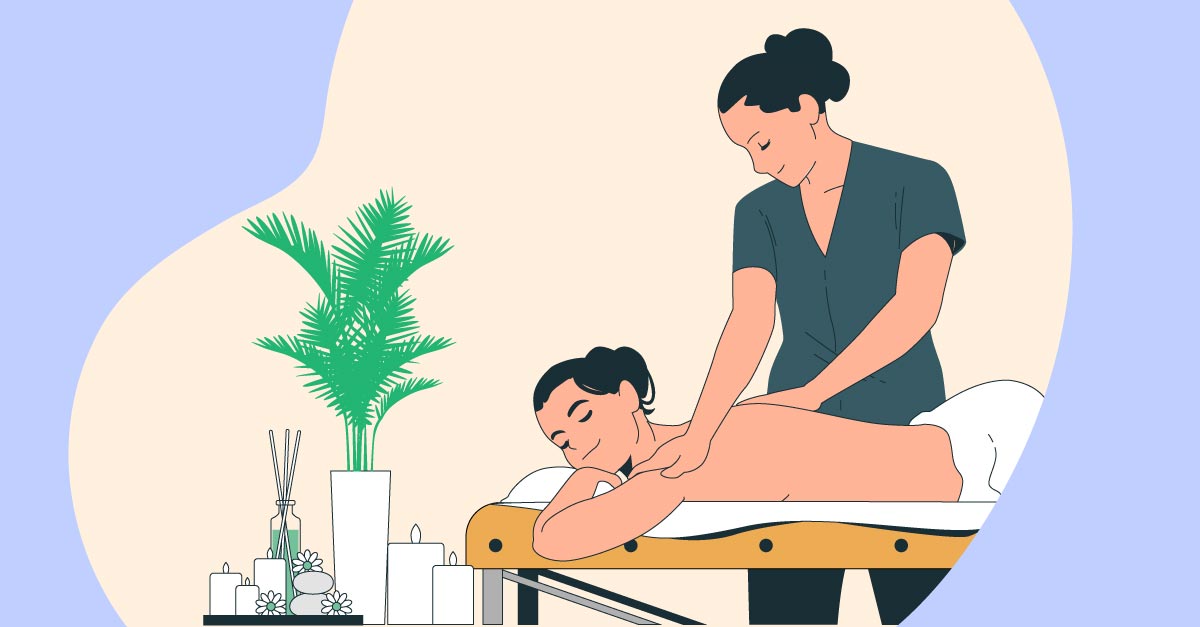Are you living with a condition that causes painful swelling? Is an arm or leg getting bigger after a surgery or another damage-causing treatment?
Lymphatic drainage massage, also called manual lymphatic drainage, may be a good therapy to use in these situations. This technique can help improve the flow of fluid around your body, reduce pain, and promote relaxation for people with conditions like fibromyalgia, rheumatoid arthritis, or cancer.
Lymphatic System: An Overview and Potential Issues
Your lymphatic system helps move a fluid called lymph around your body. It consists of lymph vessels, lymph nodes (small structures filled with immune cells), and organs like your spleen, appendix, tonsils, and thymus.
Your lymphatic system has a few different jobs, including:
- Making sure that each type of tissue throughout your body contains the right fluid levels
- Helping your immune system fight infections by carrying around immune cells and filtering bacteria or other germs out of your tissues
- Allowing your body to absorb fat from the foods you eat to be used as fuel
What happens when your lymphatic system isn’t working as it should? One of the biggest issues that you could face is lymphedema, in which fluid can’t properly drain out of part of your body. This could happen if you have surgery to remove lymph nodes, receive radiation treatments that damage your lymph nodes, experience a buildup of scar tissue after a surgery, or have a history of severe infection or injury that disrupted your lymphatic system. Lymphedema symptoms typically include major swelling and pain. You may also feel like your skin is thick or tight in a particular area or notice that an arm or leg feels unusually heavy. Some people with lymphedema also say that they experience itching, burning, or hair loss in the affected location.
Lymphatic Drainage Massage: What Does It Do?
While traditional massages aim to relax your muscle tissue, lymphatic drainage massages involve special techniques that relieve swelling caused by built-up lymph fluid. This fluid may contain germs, dead or damaged cells, and cellular waste, so it’s not good to have it just sitting in one area.
During a lymphatic drainage massage, a massage therapist targets swollen areas and helps get the fluid moving again. If a bunch of lymph fluid got backed up in an arm or a leg, for example, lymphatic drainage massage can help to literally push the fluid back towards your heart, where it’s picked up by working lymph nodes that help circulate it.
This type of therapy may also improve healing after an injury, especially if your body is scarring in a way that affects your body’s ability to rebuild new tissue. Lymphatic drainage massage can also help break up old clumps of scar tissue. Research has also found that lymphatic drainage massages can help fight stress and make you feel more relaxed. They may accomplish this by activating your parasympathetic nervous system, a part of your brain in charge of processes that help your mind and body rest. However, other massage types are thought to have similar effects — you likely don’t have to get this specialized form of massage to experience anxiety-busting advantages.
When Might Lymphatic Drainage Massage Help?
You might benefit from lymphatic drainage massage if you’re dealing with lymphedema. In particular, this therapy is often recommended for people who have undergone treatments for breast cancer, since this group often experiences lymph node damage due to surgery or radiation.
This type of massage can also help people with certain health conditions that lead to pain and swelling, including fibromyalgia, rheumatoid arthritis, lipedema (an unusual buildup of fat tissue in your legs or sometimes arms), or chronic venous insufficiency (a condition in which the veins in your legs aren’t working well).
Is Lymphatic Drainage Massage Safe?
In general, most people won’t experience side effects from a lymphatic drainage massage. However, it’s possible you might feel tired or nauseous or have a headache afterward.
Experts recommend not getting this therapy if you have certain health conditions, including an infection, a heart problem, kidney failure, or a history of blood clots. Talk to your doctor before getting a lymphatic drainage massage if you’re not sure whether this technique would be a good fit for you.

How To Get a Lymphatic Drainage Massage
If you’re interested in a lymphatic drainage massage, see if there are any massage therapists in your area who specialize in this technique. You may also be able to see if your health care team has any recommendations for providers in your area.
You can also learn to perform your own lymphatic drainage massage. Your doctor or a massage therapist may be able to teach you the technique. You can also search YouTube for free videos. For example, check out these how-to videos related to reducing swelling in your face and neck, arm, or leg.
Overall, lymphatic drainage massage can be a great tool if you’re dealing with certain chronic conditions that lead to pain. Talk to your doctor if you’re interested in learning more about how it may help with your individual symptoms!
